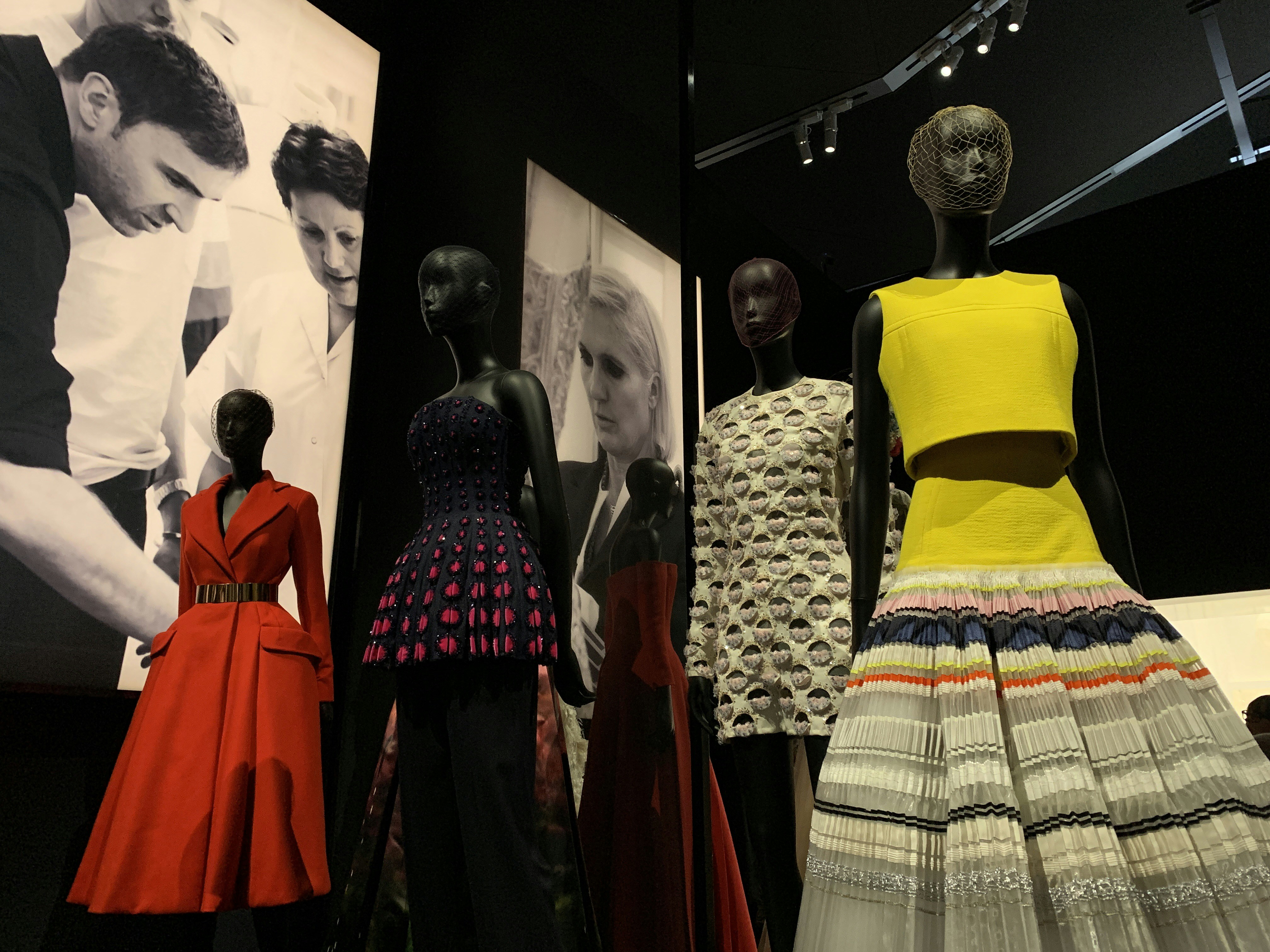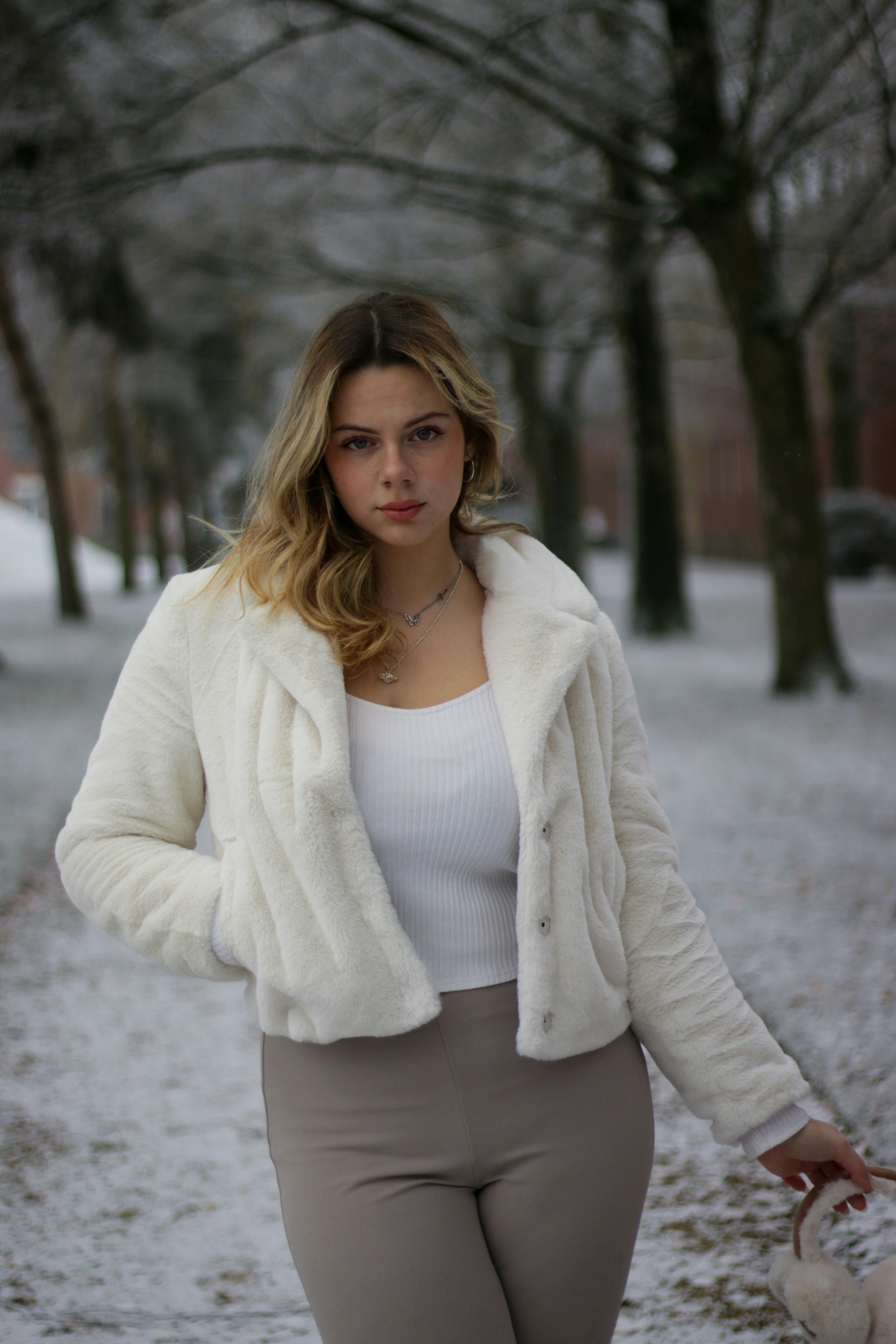Understanding the Art of Layering
Layering is a fundamental aspect of winter fashion that combines both functionality and style. The practice involves wearing multiple garments on top of one another to create a cohesive look that remains practical during colder months. One of the primary advantages of layering is its versatility; it allows individuals to adapt easily to fluctuating temperatures, ensuring comfort both indoors and outdoors. By selecting various textures and weights, women can construct outfits that are not only warm but also visually appealing.
In winter, dressing in layers offers the opportunity to showcase personal style while embracing the colder climate. The foundation of effective layering lies in understanding the different purposes each layer serves. The base layer is primarily designed for thermal insulation, often made from moisture-wicking materials to keep the body dry. The middle layer adds warmth, utilizing materials such as fleece or wool, and functions to trap heat close to the body. Finally, the outer layer should provide protection against wind, rain, or snow, typically crafted from waterproof or windproof fabrics. Together, these layers create a balance between warmth and breathability.
Moreover, layering can significantly enhance your fashion statement. With the right combinations, women can express their individuality through color, patterns, and silhouette variations. For instance, a fitted base layer can create a streamlined effect that counters the bulk often associated with winter wear. Accessories also play a crucial role in layering; strategically chosen items, like scarves or hats, not only provide additional warmth but can also serve as focal points that elevate an outfit. Understanding the art of layering ultimately paves the way for women to curate functional, stylish looks, ensuring they remain chic and comfortable throughout the winter season.
Choosing the Right Base Layer
Base layers play a crucial role in any winter clothing ensemble, acting as the foundation upon which the rest of the layers are built. Their primary function is to keep you warm while providing a comfortable fit that does not compromise mobility. When selecting a base layer, opt for fabrics that are lightweight yet offer exceptional warmth. Merino wool is an excellent choice; it possesses natural insulating properties and breathability, ensuring that you remain warm without overheating. This type of wool also has moisture-wicking capabilities, effectively managing perspiration, which is essential when engaging in outdoor activities.
Another viable option is thermal blends, which often incorporate synthetic materials designed to trap heat while allowing for flexibility and ease of movement. These blends typically provide a snug fit that contours to the body, eliminating unnecessary bulk while still offering warmth. Likewise, moisture-wicking materials are highly recommended; they are engineered to pull sweat away from the skin, enhancing overall comfort during colder months.
Fit and style are paramount when it comes to base layers. It is advisable to choose items that are form-fitting yet comfortable, as this will facilitate easy layering with mid and outer layers. Look for features such as flat seams to prevent chafing, and consider necklines that suit your style preferences—crew necks, turtlenecks, and scoop necks are all popular options. Selecting base layers that can be easily integrated with other clothing items will allow for versatility and enhance the overall aesthetics of your winter wardrobe. By making informed choices regarding fabric, fit, and style, women can effectively layer without adding unnecessary bulk and maintain a polished winter look.
Choosing the Ideal Mid-Layer for Winter Fashion
When it comes to mastering winter fashion, selecting the perfect mid-layer is pivotal. Mid-layers serve as essential components in anyone’s winter wardrobe, striking a harmonious balance between warmth and style without adding unwanted bulk. This section explores how to choose mid-layers such as sweaters, cardigans, and fleece jackets, paying attention to factors like fabric thickness, flattering cuts, and textural layering.
The thickness of the fabric plays a crucial role in how a mid-layer performs in terms of insulation. Thinner fabrics, such as lightweight merino wool or fine-knit cashmere, can provide warmth without the heaviness often associated with traditional winter garments. These materials not only retain heat but also allow for breathability, essential for transitioning between indoor and outdoor environments. However, while opting for lighter materials, it’s necessary to ensure they are dense enough to withstand winter’s chill.
Flattering cuts are equally significant when selecting a mid-layer. Tailored cardigans or fitted sweaters can enhance your silhouette, maintaining a sleek appearance while layered beneath outer coats. It is advisable to experiment with different styles, such as cropped, oversized, or belted options, to discover what complements your body shape best. The right cut will not only improve your profile but will also contribute to the overall aesthetics of your winter ensemble.
Additionally, layering textures can elevate your outfit. Incorporating diverse textures, such as a soft fleece jacket over a chunky knit sweater, adds depth to your look while keeping your ensemble visually interesting. Versatile mid-layer pieces, which can be dressed up or down, such as a tailored turtleneck or a stylish cardigan, can easily transition from casual outings to formal events, ensuring you remain fashionable while staying cozy.
Outer Layers That Keep You Chic
When navigating the complexities of winter fashion, selecting the right outerwear is crucial. Finding coats and jackets that provide warmth while maintaining a chic, sleek appearance can seem challenging. However, by choosing wisely, you can achieve the perfect balance of both comfort and style.
Puffer jackets remain a popular choice for their lightweight qualities and effective insulation. Today’s designs have evolved to focus not just on functionality but also on aesthetics, featuring tailored silhouettes and trendy colors. Look for high-quality materials that are lightweight yet durable, ensuring that these jackets are not overwhelming. Opting for a cropped puffer can enhance your shape, especially when paired with high-waisted trousers or skirts, creating a well-balanced look.
Structured coats are another must-have this winter season. Styles such as double-breasted blazers or tailored wool coats offer sophistication without unnecessary bulk. When selecting a structured coat, pay attention to the fit and length. A coat that hits just above the knee can elongate your silhouette and is ideal for both formal and casual outings. Choose a coat that cinches at the waist to accentuate your shape, avoiding the common pitfall of boxy fits that may add unwanted volume.
Wool overcoats are timeless pieces that provide elegance and warmth. Natural fibers like wool can regulate temperature effectively, making them an excellent choice for cold weather. Aim for overcoats with a clean, streamlined design and subtle detailing to maintain an elevated appearance. When choosing color, classic shades like camel, navy, or charcoal can easily complement your existing wardrobe.
With the array of options available, mastering winter layering means focusing on functionality while embracing your personal style. By carefully choosing the right outer layers like puffer jackets, structured coats, and wool overcoats, you can stay warm and chic throughout the winter season.
Incorporating Accessories for Style and Function
Winter fashion is not merely about bulk and warmth; it is equally about showcasing personal style. Accessories play a crucial role in achieving this balance, particularly when layering clothes. Items such as scarves, beanies, and gloves can enhance an outfit’s aesthetic while providing essential warmth, allowing you to stay cozy without sacrificing style. Selecting the right accessories is paramount in ensuring they complement rather than overwhelm your layered look.
When choosing a scarf, consider both fabric and design. Opt for lightweight, breathable materials like merino wool or cashmere, as these provide warmth without adding excessive bulk. A well-chosen scarf can elevate your outfit, serving as a statement piece or harmonizing subtle colors. Additionally, long or oversized scarves can be draped in various styles, offering versatility in layering techniques.
Headwear is another significant component in winter fashion. Beanies can add a casual yet chic element to your ensemble. Aim for styles that fit snugly without excessive fabric, which can disrupt the silhouette of your layered outfit. Color coordination is essential; for instance, a neutral beanie can complement a vibrant outer layer, ensuring a cohesive look. If you prefer something more formal, consider a fitted beret or a fedora, both of which can add sophistication.
Lastly, gloves should not be overlooked, as they are both functional and stylish. Choose a pair that fits comfortably without being too bulky. Leather or knitted gloves often provide a sleek look, contributing to the overall polished appearance of your winter outfit. When selecting these accessories, remember to maintain a consistent color palette that integrates seamlessly with your layers, thereby achieving an elegant, streamlined style.
By thoughtfully incorporating accessories such as scarves, beanies, and gloves, you can master the art of winter layering. This approach allows for warmth and style, ensuring that you feel confident and fashionable even during the coldest months.
The Role of Footwear in Layered Winter Outfits
Footwear plays an essential role in shaping the overall aesthetic and functionality of layered winter outfits. The right choices can dramatically enhance both comfort and style, ensuring that one remains fashionable while navigating the cold months. When layering for winter, it is vital to select shoes that not only complement the ensemble but also provide warmth and support. Options such as ankle boots, knee-high boots, and insulated sneakers offer diverse looks that suit various occasions and preferences, making them essential elements of winter fashion.
Ankle boots are a versatile choice that pairs well with numerous layered outfits. They can be effortlessly styled to match dresses, skirts, or trousers, adding a chic element without overwhelming the silhouette. For those seeking a balance between warmth and elegance, knee-high boots are an excellent option. These can be worn over leggings or tucked into well-fitted jeans, providing an elongated appearance while maintaining insulation against the cold. Opting for designs that feature sleek lines and fitted shapes can help avoid a bulky look, ensuring that the outfit remains streamlined.
Insulated sneakers, gaining popularity in contemporary fashion, offer a functional yet stylish alternative for casual outings. They seamlessly blend comfort with a trendy aesthetic, perfect for those days requiring more mobility. When selecting footwear, consider factors such as material, insulation, and sole design, as these elements contribute significantly to overall comfort and functionality. Additionally, choosing colors that coordinate with the layered outfits can further enhance visual appeal.
In conclusion, the appropriate footwear can effectively complement layered winter outfits, allowing for the seamless integration of style and practicality. By thoughtfully choosing between ankle boots, knee-high options, or insulated sneakers, one can maintain a fashionable appearance throughout the colder months.
Color Coordination and Patterns
Seasonal transitions often present challenges in our wardrobe choices, particularly during winter months when layering is essential yet can lead to a bulky appearance. A well-thought-out color palette plays a crucial role in maintaining a streamlined look. When selecting colors for winter outfits, opting for a cohesive color scheme can enhance the overall aesthetic. Neutral tones such as beige, gray, and navy serve as versatile foundations, allowing for the addition of one or two accent colors, which can provide a pop of interest without overwhelming the ensemble.
Additionally, understanding the impact of colors on visual perception is essential. Darker colors tend to appear slimming, while lighter shades can add volume. For instance, deep navy coats paired with lighter knitted tops create a balanced silhouette that commands attention without appearing bulky. It is advisable to coordinate layers in a manner that creates a gradient effect, ensuring a seamless transition between shades while also allowing for easy mixing and matching.
Patterns, too, can significantly influence the perception of bulk. While large, bold patterns may be visually appealing, they can sometimes create an illusion of heaviness. Instead, smaller, subtler patterns—such as pinstripes or micro-dots—work well to complement layered looks without adding excess bulk. When mixing patterns, consider varying scales; pairing a larger patterned scarf with a finer striped dress can create visual intrigue while maintaining balance in proportions. Understanding the synergy between colors and patterns allows for creative expression without sacrificing a streamlined appearance.
How to Layer for Different Occasions
Layering clothes is a versatile technique that can enhance your winter wardrobe while allowing for personalization based on different occasions. Understanding how to layer effectively can make a significant difference in achieving the right look, whether you are dressing for casual outings, formal events, or workplace settings.
For casual outings, the focus should be on comfort and style. Start with a fitted base layer, such as a turtleneck or a lightweight long-sleeved top. Add a cozy cardigan or a knitted sweater for warmth. To maintain a streamlined silhouette, opt for tailored bottoms like high-waisted jeans or slim-fit trousers. Accessories play a crucial role here; consider a stylish scarf or beanie that complements your outfit. Choosing versatile pieces, like a classic denim jacket, can also elevate your casual look effortlessly.
When attending formal events, layering requires a more polished approach. A sleek, form-fitting dress can serve as your base layer. Layer it with a fitted blazer or a tailored coat that adds structure without overwhelming the outfit. Ensure that the outer layer complements the dress in color and fabric to achieve a harmonious appearance. Consider opting for a dressy scarf or a statement necklace to add a touch of sophistication, while remembering to choose shoes that align with the overall elegance of the ensemble.
In a workplace setting, professionalism should be your priority. Begin with a crisp blouse or a silk shirt as your base. On top, wear a structured blazer or a chic vest to create a refined look. This type of layered outfit allows for comfort while maintaining an authoritative presence. A pair of tailored trousers or a pencil skirt can complete the look seamlessly. By incorporating classic pieces such as a trench coat during commutes, you ensure versatility while still exuding professionalism.
In conclusion, mastering the art of layering for different occasions involves understanding your environment and choosing appropriate pieces that allow you to express your style while remaining comfortable. By selecting versatile items, you can navigate various settings confidently, ensuring you look chic without the bulk often associated with winter wear.
Mistakes to Avoid When Layering
Layering is a pivotal element of winter fashion, enabling women to remain warm while maintaining a chic appearance. However, certain common missteps can detract from the overall aesthetic, rendering outfits bulky and frumpy instead of stylish and sophisticated. One prevalent mistake is the tendency to choose oversized pieces without consideration for body proportions. While oversized garments can be comfortable, wearing too many loose items simultaneously often results in an unflattering silhouette. To counteract this issue, aim for a balanced look by mixing oversized items with tailored pieces, such as a fitted turtleneck beneath a voluminous cardigan.
Another error frequently encountered is neglecting to pay attention to proportions. When layering, it is crucial to ensure that various clothing dimensions complement each other. For instance, pairing a long tunic with a knee-length coat can visually elongate the body, while an imbalanced outfit can make the wearer appear shorter and stouter. Always consider the lengths and shapes of each layer that culminate in a cohesive, proportional ensemble. This method not only adds elegance but also supports effective layering techniques.
Moreover, mismatching styles can significantly undermine the potential of a layered outfit. Combining clashing patterns or mismatched aesthetics can create visual discord. Instead, focus on cohesive color palettes and complementary designs to achieve a polished look. For instance, pairing a delicate sweater with a structured blazer and tailored trousers can elevate the ensemble and ensure that the various elements harmonize effectively.
Avoiding these common mistakes will empower women to layer their winter outfits with confidence, cultivating a sophisticated style that is both functional and fashionable. Incorporating these guidelines will aid not only in maintaining warmth but also in achieving an effortlessly elegant layered appearance.



